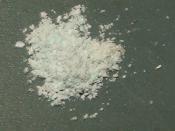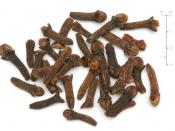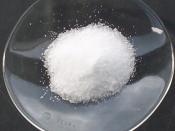Abstract
The purpose of this experiment was to isolate eugenol oil from cloves by steam distillation as the main technique. This experiment had a percent yield of 8.08%, which is relatively low due to the lost of the final product. Sodium bicarbonate was added instead of anhydrous sodium sulfate that lead to the lost of product. HCL acid was added to get the solution back a pH of 1 or 2. The solution was the boil to obtain the final product. The final product was brown oil that was then analyzed with its IR spectrum. The IR spectrum concluded that the final product was mostly eugenol and that the erroneous addition of sodium bicarbonate did not affect the final product. Analysis of the IR spectrum concluded that the final product was eugenol oil. The index refraction was 1.5223 and compared to the literature value of 1.5410, which concludes that the final product was not pure due to an error during the procedure.
Introduction
Eugenol, an phenylpropanoid which synthesized from amino acid and phenylalanine in may aromatic plants like, cloves, Syzygium aromaticum , the best source of eugenol, where 80-90% of its component is eugenol while the remaining 10% is the eugenol acetate. It is made up of C=C and an aromatic hydroxyl group, phenol. It is widely used for its anesthetic and analgesic action in dentistry, posseses significant antioxidant, anti-inflammatory and cardiovascular properties, also act as penetration enhancer. Steam distillation is performing a co-distillation with water where oil can be isolated with lower temperature than the actual boiling point of the two components. Active solvent extraction is the process by which the oil (eugenol) isolated from the other constituents of clove's o. Essential oils are the volatile components associated with the aromas of many plants. In this experiment, the...


